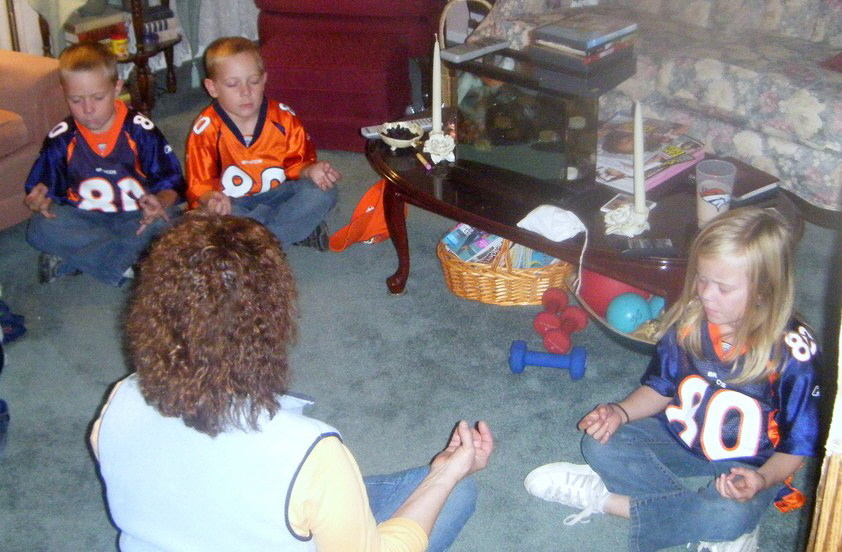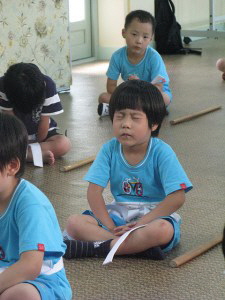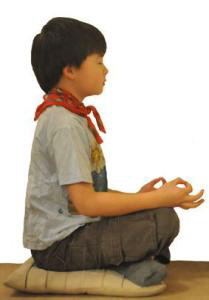|

Why to Teach Your Children Meditation
November 11, 2014
First: meditation, at least the meditation we are taking about, is not religion. Meditation is not about spirituality. Teach your children to meditate because it will exercise their brains like nothing else. Meditation stimulates the brain in unique and valuable ways. See 5 different articles on Meditation and Neuroplasticity.
First: meditation is not about religion. Yes, there are lots of religions where meditation is a component perhaps the biggest component. Yes, people have used and stressed meditation as a part, maybe the main part of a spiritual path. Yes, we, Christians, have not traditionally been exposed to, much less taught, meditation as a part of our practice. Just don’t go there. Use and teach meditation because it is a valuable tool for you and your children.
- “If every 8 year old in the world is taught meditation, we will eliminate violence from the world within one generation.” Dalai Lama
Secondly: Wow, the list of supposed and proven benefits of meditation is enormous. I’m sure you can find a study, or at least a person selling something, that says meditation will make you taller or your hair thicker, or whatever. We suggest you stick with the facts that mediation affects your brain, in a good way. We’re also suggesting that you use your judgment about whether it is working for your children, your family and you. (Look for our small list of unsubstantiated claims at the end in the three Rs)

Instead of meditation, let’s call it “Focused Awareness” or “Focused Attention”. Some say “Mindfulness” which is defined as “Focused Awareness”. We like “Focused Attention” because it conveys the exercise components.
Forget all the research for a minute and ask yourself two questions. (1) Would you like to focus better? (2) Would you like to be more aware? OK three questions. (3) Do you think focus and awareness would be useful skills for your children?
If you said “yes” then let’s get started. Focus on your breath. Focus on any aspect of breathing that is interesting to you. How does the air feel on your nostrils? Right at the point of your nose the air that you breathe in changes from something outside of you to something inside of you. When you breathe in or for that matter take anything in like eat an apple, that external thing is now becoming part of you. The air or apple will be broken down by your body into stuff that your body needs and wants like oxygen and nutrients. And when you breathe out, right at the point of your nostrils, what your body didn’t use will be returned to the world.
Focus on your nostrils. Focus on how the breath feels going down your throat. (Yes, it hopefully went down your trachea not your esophagus. We’re writing for your kids too so let’s just say “throat”). Focus on your lungs filling. When you filled your lungs did your tummy go out or did your tummy go in? (Yes, we know your diaphragm is not your tummy but let’s stay with the awareness and work on anatomy at a different time.) If your tummy came in when you breathed in, how does it feel to make your tummy go out when the breath comes in? How deep are you breathing? Lungs are big. Did you take the breathe to the bottom of your lungs? And if you did, then did you breath out from the bottom of your lungs?

Focus on how your breathing feels physically. Focus on the parts of the breath. Breathe in slowly and really, mentally, take it all in. How long do you hold the breath before you let it back out ? (yes, “exhale” is a good word for that) What about those pauses, there can be a pause, or not, after you breath in and there can be a pause after you breath out. The pauses in your breath are pretty interesting. How long do they last? What happens when you play with their length?
Focus on how your body feels breathing. Focus on how you feel in the pauses. Move your awareness around to different parts of your body as you breathe.
The attention part is: as you breathe you will lose your focus. Your mind will interrupt you and next thing you know you’re planning dinner, doing laundry, or wondering how next year’s Christmas party will unfold. It’s all very well. Just bring yourself back, return your attention to, your breathing.
When is a good time to meditate? Anytime! Focus your awareness whenever and however you want. Don’t expect your four year olds, to whom you have started introducing focused awareness, to stop jumping on the couch and “meditate” at your command. Maybe as you sit or lie down for an nap or after reading time, it would be appropriate and even fun to meditate, to practice focused awareness.
- “MindUP™ nurtures optimism and happiness in the classroom, helps eliminate bullying and aggression, increases empathy and compassion, while resolving peer conflicts in schools.” TheHawnFoundation.org/mindup/
Focusing on breathing is a universal meditation technique. Until you don’t need it anymore, breathing is always with you and there for your observation. Surely there are countless other techniques, suggestions, methods, guided and scripted that are useful, valuable and relevant. Many can be found in the resources below.
The Three Rs. Focused awareness is a skill and tool. Just as we learn and practice to develop the three Rs: Reading wRiting and aRithmetic, focused awareness develops it’s own three R’s: Reflection, Relationships and Resilience.
Brain Fitness: Develop your own focused awareness practice and teach this valuable skill to your family as a unique way to stretch and grow your main muscles, your brains.
|